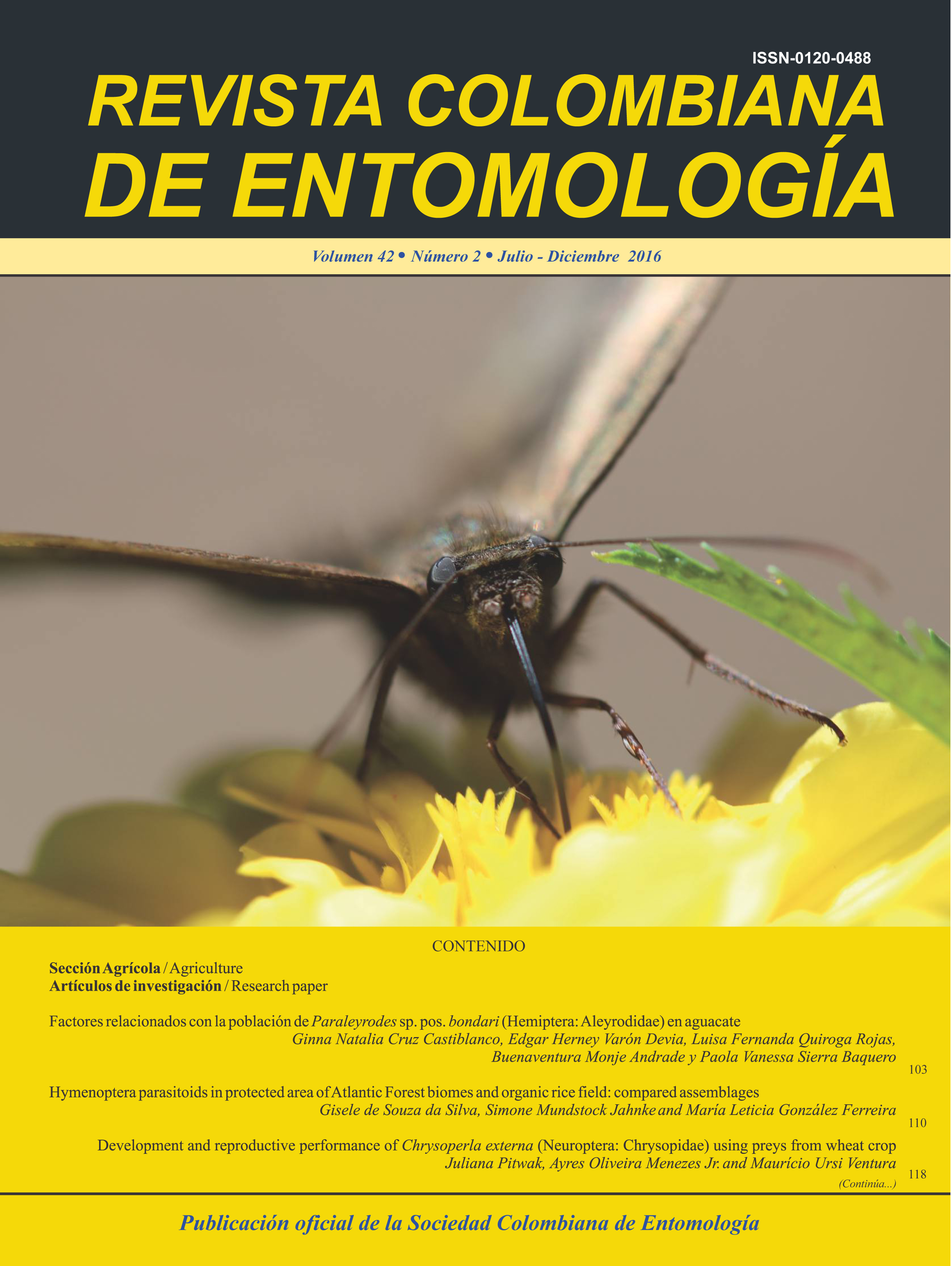Related factors to the Paraleyrodes sp. pos. bondari (Hemiptera: Aleyrodidae) population in avocado
Keywords:
Population fluctuation, Whitefly, Climatic variables, Natural enemies, Life cycleMain Article Content
The severity of the damage caused by the avocado whitefly (Paraleyrodes sp. pos. bondari) and the difficulty to control it, has forced researchers and growers to find alternatives for its management. We investigated the life cycle of the avocado whitefly and the relation of environmental factors with the population of this insect and the presence of its natural enemies in avocado. Biweekly monitoring of ten avocado trees per cultivar (cvs. Hass, Lorena and Choquette) of the percentage of leaf area occupied by whitefly colonies in each of two commercial farms at Fresno (Tolima, Colombia) was conducted during nine months. The climatic variables: rainfall, temperature and relative humidity on each farm were measured on a daily basis. Finally, a quantification and identification of the beneficial fauna associated with the crop was carried out during seven months. The avocado whitefly had a total life cycle of 27.7 ± 0.19 days. Lorena had the highest presence of Paraleyrodes. An inverse correlation between percentage of whitefly incidence in all varieties and relative humidity was observed at La Chiripa farm. Encarsia sp., Eretmocerus sp., and Amitus sp. Were identified as the main potential natural enemies of Paraleyrodes sp. pos. bondari.
Downloads

This work is licensed under a Creative Commons Attribution-NonCommercial-ShareAlike 4.0 International License.
Authors retain the copyright on their work and are responsible for the ideas expressed in them. Once a manuscript is approved for publication, authors are asked for a publication license for the term of legal protection, for all territories that allows the use, dissemination and disclosure of the same.

